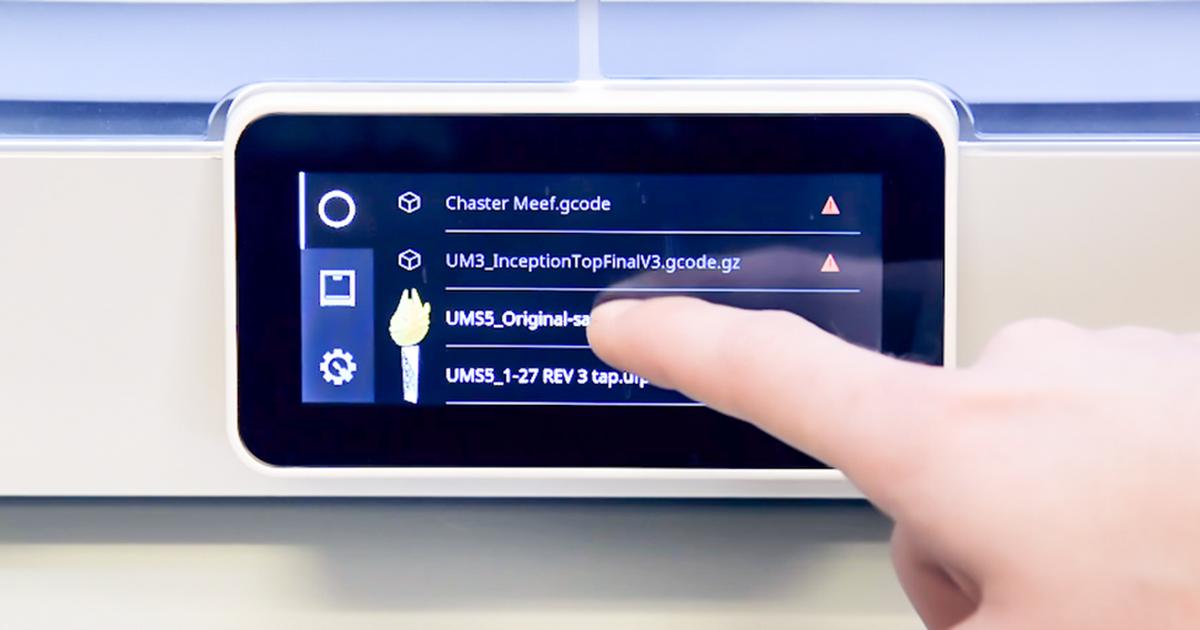In the ever-evolving world of 3D printing, advancements in technology continue to enhance user experience and improve the efficiency of printing processes. One such innovation transforming the 3D printing landscape is the integration of touch pads. Upgrading your 3D printer with a touch pad can significantly streamline your workflow, offering a more intuitive and user-friendly interface. In this article, we'll explore the benefits of adding a touch pad to your 3D printer, how it can improve your printing experience, and tips for selecting the right touch pad for your needs.
The Benefits of a Touch Pad for 3D Printing
1. Enhanced User Interface
A touch pad provides a modern, graphical user interface (GUI) that is far more intuitive than traditional button-based or rotary encoder controls. With a touch screen, you can easily navigate menus, adjust settings, and monitor print progress with simple taps and swipes. This ease of use reduces the learning curve, making it accessible for both beginners and experienced users.
2. Improved Print Management
Managing your print jobs becomes more efficient with a touch pad. Features such as real-time monitoring, easy access to print statistics, and the ability to pause, resume, or cancel prints at the touch of a button enhance your control over the printing process. Some touch pads also offer advanced functionalities like remote monitoring via Wi-Fi, allowing you to keep an eye on your prints from anywhere.
3. Customization and Flexibility
Touch pads often come with customizable interfaces that let you tailor settings to your specific needs. You can set up shortcuts for frequently used functions, create custom profiles for different materials, and even integrate additional features like temperature control and filament management. This flexibility streamlines your workflow and improves overall efficiency.
4. Aesthetic and Professional Appeal
Upgrading to a touch pad not only enhances functionality but also gives your 3D printer a sleek, modern look. A professional-grade touch screen can make your setup more appealing, whether you're showcasing it in a professional environment or a personal workshop. It adds a level of sophistication that can impress clients, colleagues, or fellow enthusiasts.
How a Touch Pad Improves Your Printing Experience
1. Simplified Calibration and Setup
One of the most time-consuming aspects of 3D printing is the calibration and setup process. A touch pad simplifies this by providing guided wizards and clear visual feedback. You can easily adjust bed leveling, set nozzle height, and calibrate extruders with step-by-step instructions displayed on the screen. This reduces errors and ensures optimal print quality from the start.
2. Real-Time Feedback and Alerts
Touch pads can display real-time feedback on various printing parameters such as temperature, print speed, and layer progress. You can receive alerts for issues like filament run-out, print failures, or maintenance needs. This immediate feedback allows you to address problems promptly, minimizing downtime and material waste.
3. Streamlined File Management
Managing print files is more convenient with a touch pad. You can browse and select files from an SD card, USB drive, or even cloud storage directly from the screen. Some touch pads support drag-and-drop functionality, making it easy to organize and manage your print library. This seamless file management saves time and keeps your workflow organized.
4. Enhanced Visualization
Touch pads can provide detailed previews of your print models, allowing you to inspect and verify designs before starting the print. This visual confirmation helps identify potential issues and ensures that the final print matches your expectations. Additionally, features like layer-by-layer visualization can help you understand the printing process better and make informed adjustments.
Choosing the Right Touch Pad for Your 3D Printer
1. Compatibility
Before purchasing a touch pad, ensure it is compatible with your 3D printer model. Check the manufacturer’s specifications and community forums for compatibility information. Some touch pads are designed to work with specific printer models or firmware versions, so it's essential to verify compatibility to avoid any installation issues.
2. Size and Resolution
Consider the size and resolution of the touch pad. A larger screen with higher resolution provides a better user experience, offering clearer visuals and more space to navigate. However, ensure that the touch pad fits within the physical constraints of your 3D printer setup.
3. Features and Functionality
Evaluate the features offered by different touch pads. Look for functionalities that match your needs, such as Wi-Fi connectivity, customizable interfaces, and advanced monitoring options. Some touch pads come with additional ports or slots for expandability, which can be beneficial for future upgrades.
4. Ease of Installation
Choose a touch pad that is easy to install and comes with clear instructions. Some touch pads are designed for plug-and-play installation, while others may require firmware updates or additional wiring. Opt for a touch pad that suits your technical skill level and provides adequate support from the manufacturer or community.
5. Community and Support
Finally, consider the level of community support and available resources. Touch pads with active user communities often have more tutorials, troubleshooting guides, and firmware updates. This support can be invaluable for resolving issues and getting the most out of your touch pad upgrade.
Conclusion
Upgrading your 3D printer with a touch pad can greatly enhance your printing experience by providing an intuitive and efficient interface. From simplified calibration to real-time monitoring and streamlined file management, a touch pad offers numerous benefits that can improve the quality and productivity of your 3D printing projects. By carefully selecting the right touch pad for your needs and ensuring compatibility, you can take full advantage of this technology and elevate your 3D printing setup to the next level.

